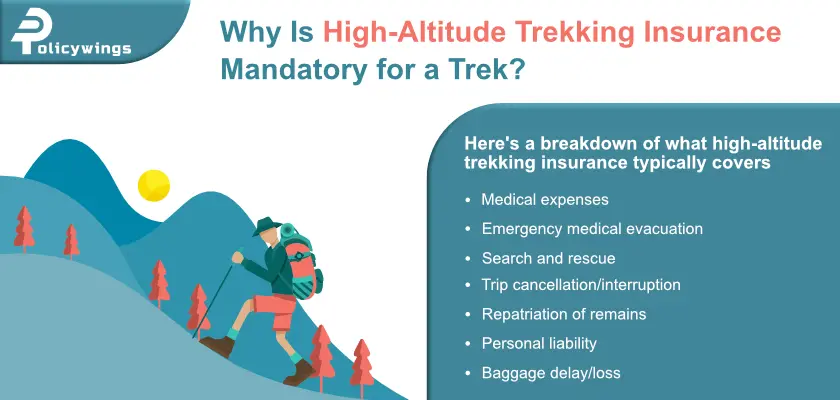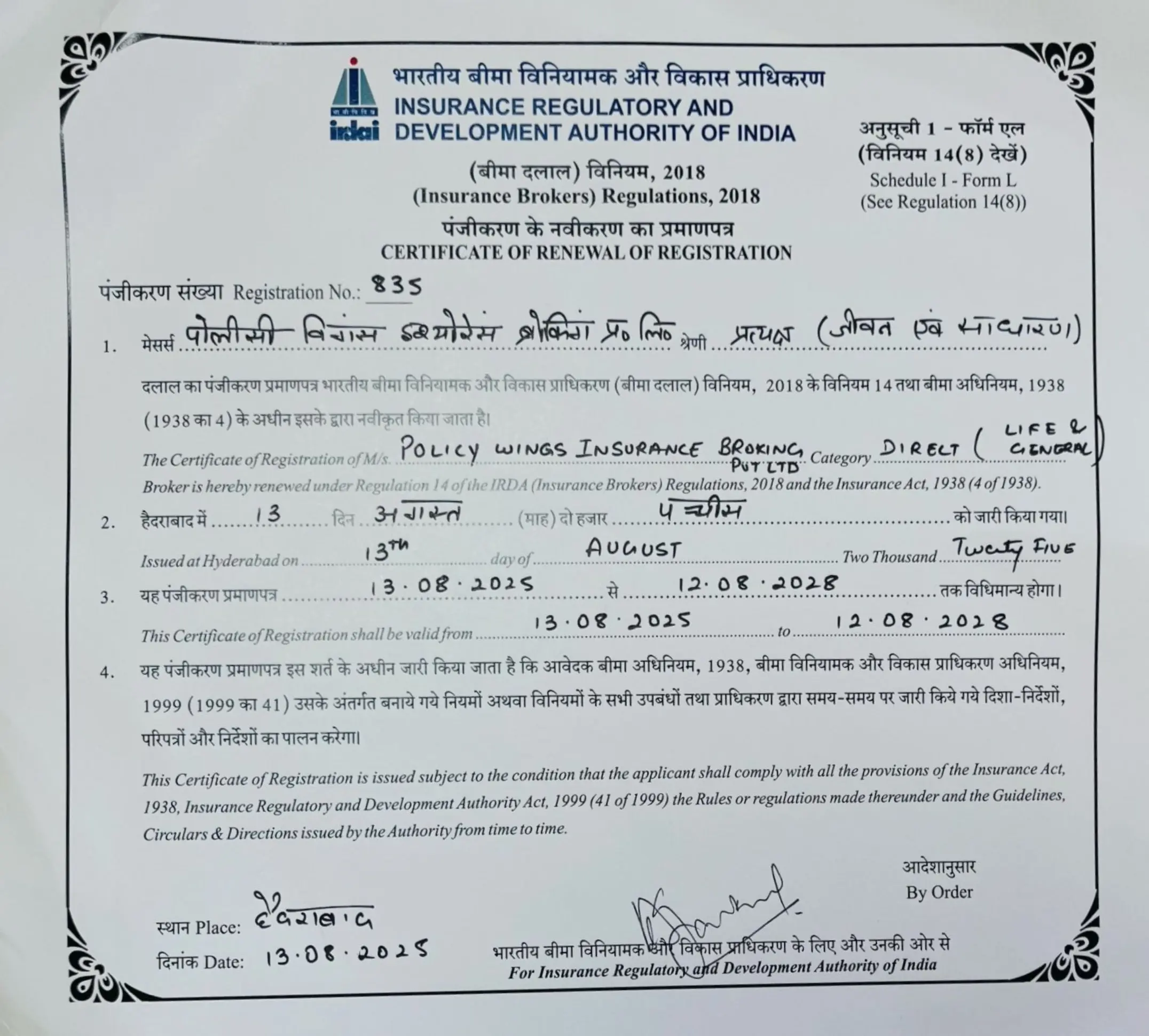Why Is High-Altitude Trekking Insurance Mandatory For a Trek?

Trekking is one adventurous activity that every city person wants to experience once in life. However, nature adventures like trekking and hiking involve risks. That’s why taking high-altitude trekking insurance becomes a necessity.
Trekking isn’t considered a big investment like buying a home. But, during high-altitude trekking, there are chances of landslides or avalanches on mountains due to unpredictable weather. Or you can find yourself with fractures and sprains or other injuries and illnesses that are highly probable for trekkers.
And if you are someone like me with no daily fitness routine then you should consider buying a high-altitude trekking insurance before escaping from city lights to starry nights in mountains.
Here in this article, you will get every single detail about high-altitude trekking insurance, so keep reading.
Why You Need High Altitude Trekking Insurance?
Call it trekking or hiking, it has become a trend these days among all working individuals for all positive reasons. Relaxing on the beach or beside a pool is indeed pleasant, but breathing pure air in serenity while hopping over mountains is a rejuvenating experience.
You not only get an adrenaline buzz from all the risky paths but also get off the beaten tracks to explore some awe-inspiring scenery.
So, whether you want to trek alone or with friends in the group, you need to have high-altitude trekking insurance. As it will give you and your family peace of mind and an assurance of being covered if any mishaps occur along the way.
Also, in the majority of the treks, the height is more than 3000 meters, so the chance of getting hit by AMS (Acute mountain sickness) is very real.
For example, trekking is almost always done in high, isolated areas where it is difficult to get medical assistance quickly.
So, a general complication like sprained ankles or fractured bone, could require a rescue team and helicopter if these incidents occur at isolated terrains.
Therefore, if anything goes south, you can relax knowing that things can be taken care of with high-altitude trekking insurance.
What is High Altitude Trekking Insurance?
High altitude trekking insurance is introduced for all the thrill and adventure seekers who wish to see more of nature by trekking at high places for the best views.
Moreover, trekking involves going to high altitudes, so a trekking insurance policy is divided based on different altitudes to offer full benefits. Such as, there is trekking insurance for up to 6,000m, trekking insurance for up to 5000m, 4000m, and 3000m.
So you have options in trekking insurance and you have to pick the right high-altitude trekking insurance policy for your specific trek.
High Altitude Trekking Insurance: Covered & Not Covered
Here’s a breakdown of what high-altitude trekking insurance typically covers:
- Medical expenses: This includes costs associated with illness or injury sustained while trekking, including hospitalization, medication, and doctor consultations.
- Emergency medical evacuation: Helicopter evacuation can be life-saving at high altitudes, and this insurance can cover the cost of getting you to medical care.
- Search and rescue: If you get lost or stranded, search and rescue operations can be expensive. High-altitude trekking insurance can cover these costs.
- Trip cancellation/interruption: Even if you don’t need medical care, unexpected events can disrupt your trek. This insurance can reimburse you for non-refundable trip costs if you have to cancel or cut your trek short due to covered reasons.
- Repatriation of remains: This covers the cost of transporting your remains home in case of a fatality.
- Personal liability: If you accidentally injure someone or damage property during your trek, this could cover the associated legal costs.
- Baggage delay/loss: It covers the cost of replacing lost or stolen items if they are delayed or lost at high altitudes.
However, points not covered under trek insurance are:
- If the trekker experiences hallucinations because of drugs or alcohol.
- If the trekker breaks any law of the particular area.
- If the trekker has any pre-existing disease.
- If the trekker does intentional self-injury.
To Conclude,
By understanding your needs and comparing plans thoroughly, you can find high-altitude trekking insurance that provides peace of mind and financial protection for your adventurous journey in the mountains.
And if not, PolicyWings is here to help you. Being an insurance broking service provider, our team is always there to assist you in buying the best policy available in the market.
This long weekend, if you plan to escape to nature, contact us, and we will help you purchase the best high-altitude trekking insurance available on the market.
FAQs
A high-altitude trek involves hiking or trekking in mountainous regions typically above 3000 meters. It requires acclimatization due to lower oxygen levels and offers challenging yet rewarding experiences with stunning landscapes and unique ecosystems.
There are many popular travel insurance for trekking up to 6,000 meters in India, covering emergency medical expenses, evacuation, and trip cancellations, ensuring comprehensive protection during high-altitude adventures.
PolicyWings will help you grab the best trekking insurance policy available in India.
High altitude trek insurance provides several benefits such as coverage for emergency medical expenses, evacuation in case of altitude sickness or injury, trip cancellations, and lost or damaged equipment, ensuring safety and financial protection during challenging treks.
The best travel insurance for the Mount Everest trek is a high-altitude trekking insurance that offers coverage for emergency medical expenses, evacuation, trip cancellations, and gear protection, ensuring comprehensive safety for climbers.
The cost of trek insurance varies according to the coverage, length, and elevation of the journey, giving daring tourists peace of mind and financial security.





